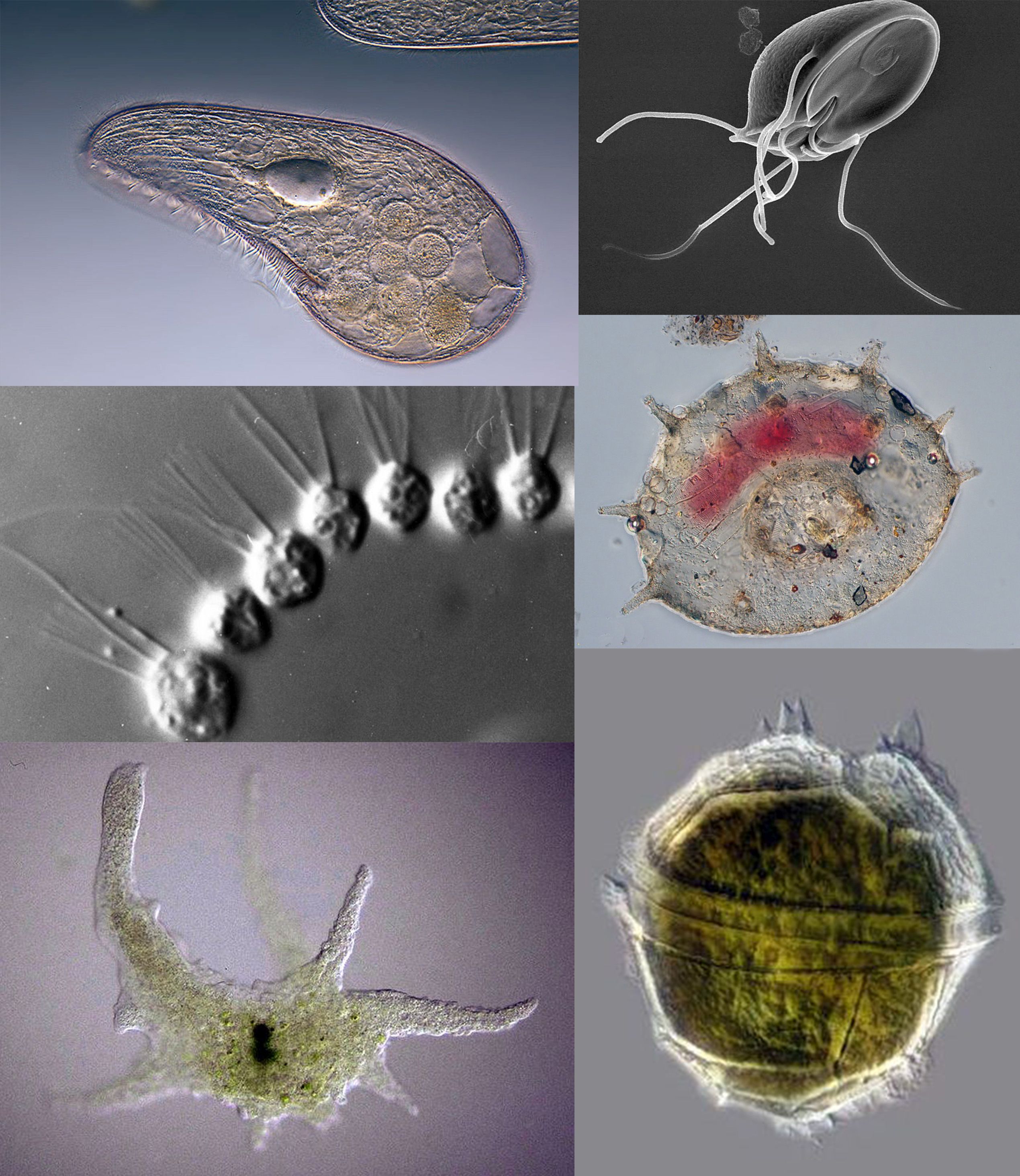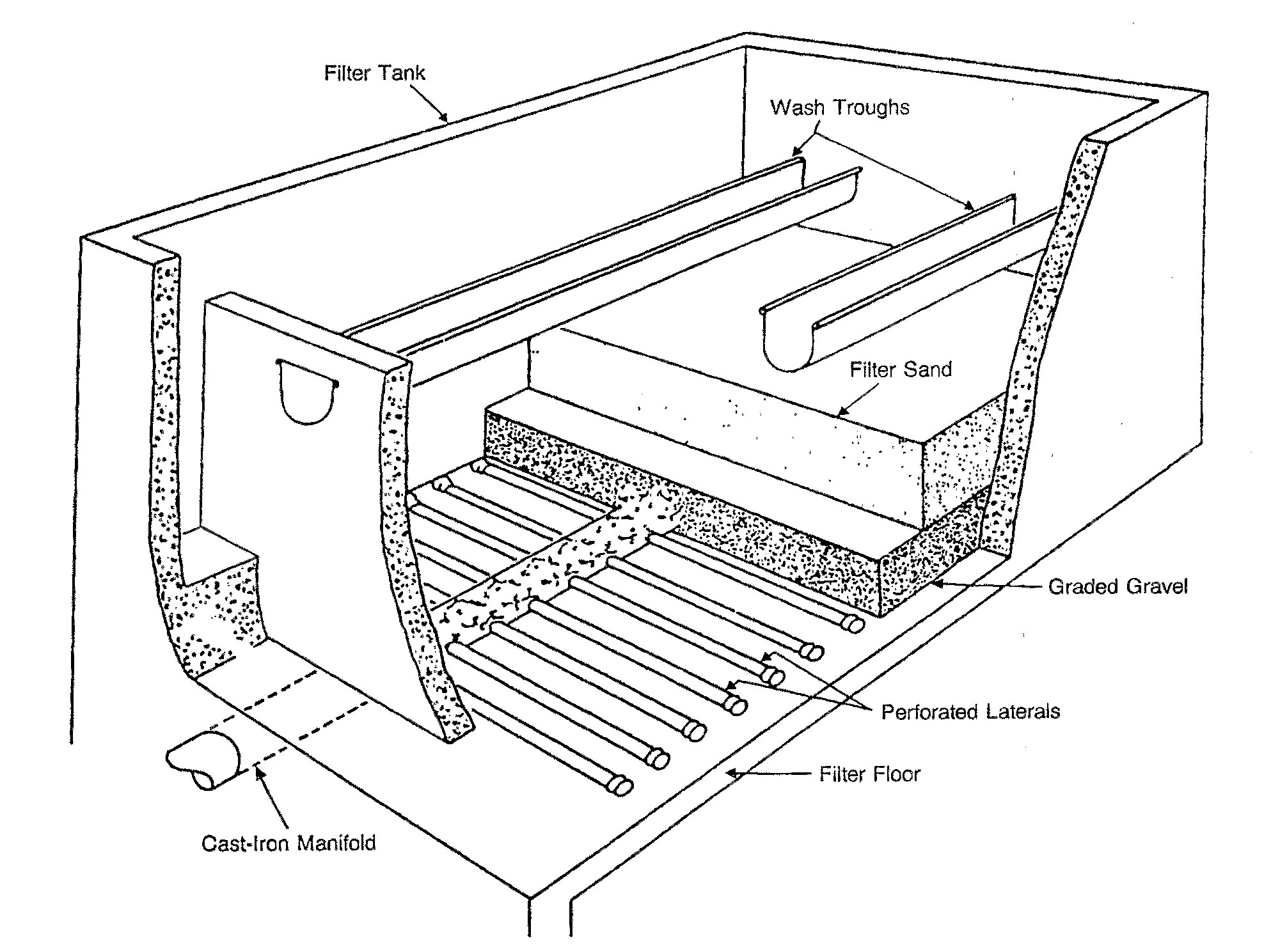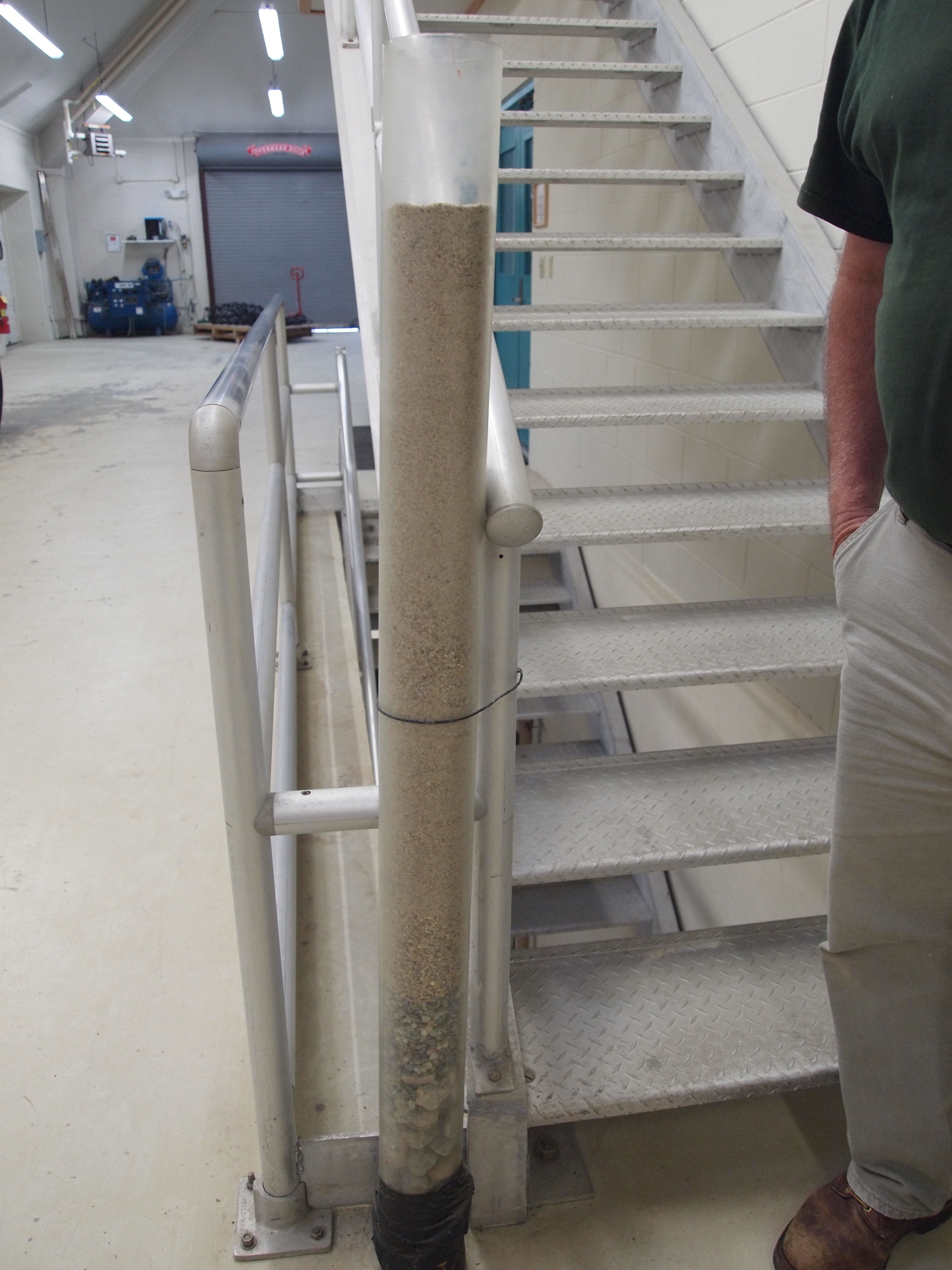|
Biosand Filter
A biosand filter (BSF) is a point-of-use water treatment system adapted from traditional slow sand filters. Biosand filters remove pathogens and suspended solids from water using biological and physical processes that take place in a sand column covered with a biofilm. BSFs have been shown to remove heavy metals, turbidity, bacteria, viruses and protozoa.Elliott, M., Stauber, C., Koksal, F., DiGiano, F., and M. Sobsey (2008). Reduction of E. coli, echovirus type 12 and bacteriophages in an intermittently operated 2 household-scale slow sand filter.Water Research, Volume 42, Issues 10-11 BSFs also reduce discoloration, odor and unpleasant taste. Studies have shown a correlation between use of BSFs and a decrease in the occurrence of diarrhea. Because of their effectiveness, ease of use, and lack of recurring costs, biosand filters are often considered appropriate technology in developing countries. It is estimated that over 200,000 BSFs are in use worldwide. History The household b ... [...More Info...] [...Related Items...] OR: [Wikipedia] [Google] [Baidu] |
Protozoa
Protozoa (: protozoan or protozoon; alternative plural: protozoans) are a polyphyletic group of single-celled eukaryotes, either free-living or parasitic, that feed on organic matter such as other microorganisms or organic debris. Historically, protozoans were regarded as "one-celled animals". When first introduced by Georg Goldfuss, in 1818, the taxon Protozoa was erected as a class within the Animalia, with the word 'protozoa' meaning "first animals", because they often possess animal-like behaviours, such as motility and predation, and lack a cell wall, as found in plants and many algae. This classification remained widespread in the 19th and early 20th century, and even became elevated to a variety of higher ranks, including phylum, subkingdom, kingdom, and then sometimes included within the paraphyletic Protoctista or Protista. By the 1970s, it became usual to require that all taxa be monophyletic (derived from a common ancestor that would also be regarded as protozo ... [...More Info...] [...Related Items...] OR: [Wikipedia] [Google] [Baidu] |
Drinking Water
Drinking water or potable water is water that is safe for ingestion, either when drunk directly in liquid form or consumed indirectly through food preparation. It is often (but not always) supplied through taps, in which case it is also called tap water. The amount of drinking water required to maintain good health varies, and depends on physical activity level, age, health-related issues, and environmental conditions. This 2004 article focuses on the USA context and uses data collected from the US military. For those who work in a hot climate, up to a day may be required. About 1 to 2 billion people lack safe drinking water. Water can carry vectors of disease and is a major cause of death and illness worldwide. Developing countries are most affected by unsafe drinking water. Sources Potable water is available in almost all populated areas of the world, although it may be expensive, and the supply may not always be sustainable. Sources where drinking water is commo ... [...More Info...] [...Related Items...] OR: [Wikipedia] [Google] [Baidu] |
Appropriate Technology
Appropriate technology is a movement (and its manifestations) encompassing technology, technological choice and application that is small-scale, affordable by its users, labor-intensive, efficient energy use, energy-efficient, environmentally sustainable, and localism (politics), locally autonomous. It was originally articulated as intermediate technology by the economist E. F. Schumacher, Ernst Friedrich "Fritz" Schumacher in his work ''Small Is Beautiful.'' Both Schumacher and many modern-day proponents of appropriate technology also emphasize the technology as People-centered development, people-centered. Appropriate technology has been used to address issues in a wide range of fields. Well-known examples of appropriate technology applications include: bike- and hand-powered water pumps (and other self-powered equipment), the bicycle, the universal nut sheller, self-contained solar lamps and Solar street light, streetlights, and passive solar building designs. Today appropriate ... [...More Info...] [...Related Items...] OR: [Wikipedia] [Google] [Baidu] |
Rapid Sand Filter
The rapid sand filter or rapid gravity filter is a type of filter used in water purification and is commonly used in municipal drinking water facilities as part of a multiple-stage treatment system. These systems are complex and expensive to operate and maintain, and therefore less suitable for small communities and developing nations. History Rapid sand filters were first developed in the 1890s, and improved designs were developed by the 1920s. The first modern rapid sand filtration plant was designed and built by George W. Fuller in Little Falls, New Jersey. Rapid sand filters were widely used in large municipal water systems by the 1920s, because they required smaller land areas compared to slow sand filters. Design and operation Rapid sand filters are typically designed as part of multi-stage treatment systems used by large municipalities. These systems are complex and expensive to operate and maintain, and therefore less suitable for small communities and developing ... [...More Info...] [...Related Items...] OR: [Wikipedia] [Google] [Baidu] |
Folkewall
The Folkewall is a construction with the dual functions of growing plants and purifying greywater. It was designed by Folke Günther in Sweden. Inspired by the "Sanitas wall" at Dr Gösta Nilsson's Sanitas farm project in Botswana, this technique makes an efficient use of space by fulfilling two essential functions: vertical plant growing and purification of greywater. This system is also known as a living wall or green wall. Design The basic design is a wall of hollow concrete slabs, with compartments opening on one or both sides of the wall. The hollows are filled with inert material like gravel, expanded clay aggregate, perlite, or vermiculite. It is designed to let the water trickle over the longest possible treatment path along the length of the wall among the pebbles. The water is brought in at the top, and percolates following a zigzag pattern inside the wall. As it does so, the plant roots grow among the inert material and extract nutrients from the water. A film of ... [...More Info...] [...Related Items...] OR: [Wikipedia] [Google] [Baidu] |
Trickling Filter
A trickling filter is a type of wastewater treatment system. It consists of a fixed bed of some material, such as rocks, coke, gravel, slag, polyurethane foam, sphagnum peat moss, ceramic, or plastic media, over which sewage or other wastewater flows downward and causes a layer of microbial slime (biofilm) to grow, covering the bed of media. Aerobic conditions are maintained by splashing, diffusion, and either by forced-air flowing through the bed or natural convection of air if the filter medium is porous. The treatment of sewage or other wastewater with trickling filters is among the oldest and most well characterized treatment technologies. The fundamental components of a complete trickling filter system are: * a bed of filter medium upon which a layer of microbial slime is promoted and developed; * an enclosure or a container which houses the bed of filter medium; * a system for distributing the flow of wastewater over the filter medium; and * a system for removing an ... [...More Info...] [...Related Items...] OR: [Wikipedia] [Google] [Baidu] |
Bank Filtration
River bank filtration is a type of filtration that works by passing water to be purified for use as drinking water through the banks of a river or lake. It is then drawn off by extraction from a well that is some distance away from the water body. The process may directly yield drinkable water, or be a relatively uncomplicated way of pre-treating water for further purification. Usage The process has been in use in Europe, especially in Germany along the Rhine and later in Berlin, since the 1870s. Major facilities also exist in many other countries, including the United States, where Nebraska leads the use of such facilities. Procedure Three filtration mechanisms are possible. Physical filtration or straining takes places when suspended particulates are too large to pass through interstitial spaces between alluvial soil particles. Biological filtration occurs when soil microorganisms remove and digest dissolved or suspended organic material and chemical nutrients. Chemical ... [...More Info...] [...Related Items...] OR: [Wikipedia] [Google] [Baidu] |
Slow Sand Filter
Slow sand filters are used in water purification for treating raw water to produce a potable product. They are typically deep, can be rectangular or cylindrical in cross section and are used primarily to treat surface water. The length and breadth of the tanks are determined by the flow rate desired for the filters, which typically have a loading rate of per square metre per hour. Slow sand filters differ from all other filters used to treat drinking water in that they work by using a complex biofilm that grows naturally on the surface of the sand. The sand itself does not perform any filtration function but simply acts as a substrate, unlike its counterparts for ultraviolet and pressurized treatments. Although they are often preferred technology in many developing countries because of their low energy requirements and robust performance, they are also used to treat water in some developed countries, such as the UK, where they are used to treat water supplied to London. Slow ... [...More Info...] [...Related Items...] OR: [Wikipedia] [Google] [Baidu] |
S M Sehgal Foundation
S M Sehgal Foundation (Sehgal Foundation) is an Indian NGO focused on rural development with its head office in Gurugram (formerly Gurgaon), Haryana. It was founded as an Indian public, charitable trust in 1999 by plant geneticist Suri Sehgal (Dr. Surinder M. Sehgal) and his wife Mrs. Edda Sehgal, who together had accumulated wealth through the 1998 sale of their hybrid seed businesses, Proagro Group. The foundation implements rural development projects in semi-arid areas of districts in twelve states (Haryana, Rajasthan, Bihar, Telangana, Uttar Pradesh, Andhra Pradesh, Karnataka, Maharashtra, Punjab, Madhya Pradesh, Uttarakhand, and Himachal Pradesh) in water security, food security, and social justice, with an emphasis on the empowerment of women and girls. Projects are supported by multiple sources, including individual donors, corporate sponsors, government grants, academic partnerships, and foundation funding. The organization's rural research unit conducts impact assessme ... [...More Info...] [...Related Items...] OR: [Wikipedia] [Google] [Baidu] |
Ultraviolet
Ultraviolet radiation, also known as simply UV, is electromagnetic radiation of wavelengths of 10–400 nanometers, shorter than that of visible light, but longer than X-rays. UV radiation is present in sunlight and constitutes about 10% of the total electromagnetic radiation output from the Sun. It is also produced by electric arcs, Cherenkov radiation, and specialized lights, such as mercury-vapor lamps, tanning lamps, and black lights. The photons of ultraviolet have greater energy than those of visible light, from about 3.1 to 12 electron volts, around the minimum energy required to ionize atoms. Although long-wavelength ultraviolet is not considered an ionizing radiation because its photons lack sufficient energy, it can induce chemical reactions and cause many substances to glow or fluoresce. Many practical applications, including chemical and biological effects, are derived from the way that UV radiation can interact with organic molecules. The ... [...More Info...] [...Related Items...] OR: [Wikipedia] [Google] [Baidu] |



